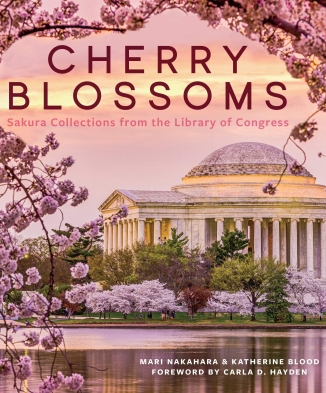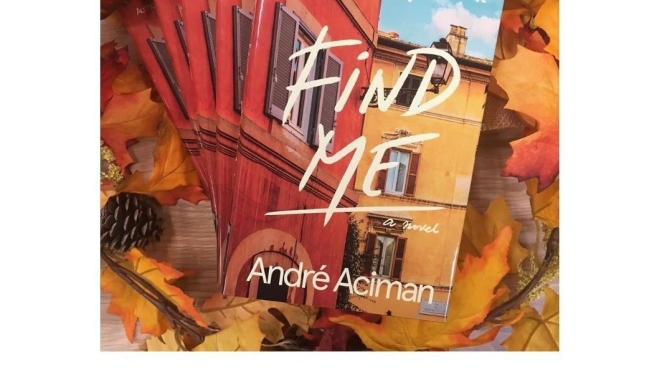 “Cherry Blossoms” reflects on the long tradition of flower viewing in Japanese culture with vivid color woodblock prints by ukiyo-e master artists, photographs, color lithographic posters and Kōkichi Tsunoi’s exquisite watercolor drawings from 1921. The book highlights the rich connections between Japan’s centuries-old traditions and contemporary counterparts. The American public’s affection for the blossoms is revealed in vintage and contemporary photographs of the Tidal Basin, collections related to the National Cherry Blossom Festival and the Cherry Blossom Princess Program, as well as decades’ worth of creatively designed festival posters.
“Cherry Blossoms” reflects on the long tradition of flower viewing in Japanese culture with vivid color woodblock prints by ukiyo-e master artists, photographs, color lithographic posters and Kōkichi Tsunoi’s exquisite watercolor drawings from 1921. The book highlights the rich connections between Japan’s centuries-old traditions and contemporary counterparts. The American public’s affection for the blossoms is revealed in vintage and contemporary photographs of the Tidal Basin, collections related to the National Cherry Blossom Festival and the Cherry Blossom Princess Program, as well as decades’ worth of creatively designed festival posters.
Vibrant springtime traditions of cherry blossom viewing in Japan and Washington, D.C., are explored in the new book “Cherry Blossoms: Sakura Collections from the Library of Congress,” published today by Smithsonian Books, in association with the Library of Congress.
Visual art, including prints, drawings and photographs from the Library’s collections, provide a fresh look at the tradition of cherry blossom celebrations that originated more than 1,200 years ago. Japan shared the tradition with the United States when they presented the nation’s capital with 3,020 cherry trees in 1912. Ever since, D.C. residents and visitors have been mesmerized by the trees and have joined in the festivities of the National Cherry Blossom Festival, which draws more than 1.5 million visitors each year.
Fascinating Facts about Cherry Blossom Traditions:
- It started over 1,200 years ago…with plum blossoms! The Japanese custom of flower viewing, or hanami, is thousands of years old. Beginning in the 9th century, saplings and trees were brought down from the mountains to grace the gardens of the aristocracy. The practice was first associated with plum (ume) blossoms before it became linked almost exclusively with cherry blossoms during the Heian period (794-1185).
- A feudal warlord threw some of the most lavish parties. Before it became popular with people at all levels of society, cherry blossom viewing in Japan was reserved for the elite. Legendary feudal warlord and samurai Toyotomi Hideyoshi (1537-98) sponsored some of history’s most lavish cherry blossom-viewing events. His 1594 celebration at Mount Yoshino included a poetry party, a nō play, and a hanami party with 5,000 guests. In 1598, he built hillside teahouses to accommodate guests for his party at Kyoto’s Daigoji temple and transplanted 700 cherry trees to the site.
- Blossoms Symbolize Fleeting Delights in Life. Cherry blossoms are heralds of spring, but their short blooming period also evokes the ephemeral beauty of life. Edo period (1603-1868) hanami celebrations featured the pleasure of food and drink, poetry and music – tinged with wistful appreciation of the fleeting beauty of both blossoms and earthly delights. This tradition continues. The transitory beauty of life becomes vivid when gusty spring winds end the blooming season with showers of drifting petals, an effect the Japanese call hanafubuki (cherry blossom blizzard).
- A “Field of Cherries” in Potomac Park? It took the U.S. Army Corps of Engineers three decades to transform the low-lying area known as Potomac Flats into Potomac Park. A 1914 sightseer map of Washington features the new park and labels the road around the west end of the Tidal Basin as the “Speedway.” U.S. Department of Agriculture botanist David Fairchild and cherry tree advocate Eliza Scidmore promoted the site as an ideal place for a “field of cherries.”
- Not all cherry blossoms are pink. Cherry blossoms varieties include multiple colors: white, pink, yellow – even green. Twelve different varieties of cherry blossom trees were sent from the city of Tokyo to Washington D.C. in 1912. While most were the white-pink Somei Yoshino, there were also 10 different varieties of double-flowered (or manifold) trees, one variety with green blossoms, called Gyoikō, and some varieties with fragrance. The trees around today’s Tidal Basin are limited primarily to Somei Yoshino and Kwan-Zan.
Authors Mari Nakahara and Katherine Blood, both curators in the Library’s Prints and Photographs Division, present a comprehensive view of the history of this annual celebration, illustrated by prints, posters, photographs and artifacts from the Library’s rich collections.


